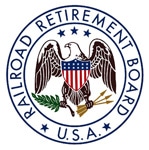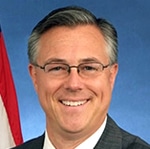 A new benefit year under the Railroad Unemployment Insurance Act begins July 1, 2014. The maximum daily benefit rate payable for claims under this Act increases to $70 in the new benefit year. Benefits are normally paid for the number of days of unemployment or sickness over four in 14-day registration periods, so maximum benefits for biweekly claims would total $700.
A new benefit year under the Railroad Unemployment Insurance Act begins July 1, 2014. The maximum daily benefit rate payable for claims under this Act increases to $70 in the new benefit year. Benefits are normally paid for the number of days of unemployment or sickness over four in 14-day registration periods, so maximum benefits for biweekly claims would total $700.
However, as a result of a sequestration order under the Budget Control Act of 2011, the U.S. Railroad Retirement Board (RRB) will reduce unemployment and sickness benefits by 7.2 percent through Sept. 30, 2014. Future reductions, should they occur, will be calculated based on applicable law.
For this reason, at the start of the new benefit year the maximum amount of benefits payable in a two-week period will be $649.60. In addition, sickness benefits paid for other than on-the-job injuries are reduced for regular Tier I payroll taxes of 7.65 percent. Coupled with the 7.2-percent reduction, the maximum amount payable on these sickness benefits will be $599.91 over two weeks.
During the first 14-day claim period in a benefit year, benefits are payable for each day of unemployment or sickness in excess of seven, rather than four, which, in effect, provides a one-week waiting period. Initial sickness claims must also begin with four consecutive days of sickness. However, only one waiting period is required during any period of continuing unemployment or sickness, even if that period continues into a subsequent benefit year. Claimants already on the rolls will, therefore, normally not be required to serve another waiting period because of the onset of the new benefit year.
To qualify for normal railroad unemployment or sickness benefits in the benefit year beginning July 1, 2014, an employee must have had railroad earnings of at least $3,512.50 in calendar year 2013, counting no more than $1,405 for any month. Those who were first employed in the rail industry in 2013 must also have at least five months of creditable railroad service in that year.
Under certain conditions, employees with at least 10 years of service who do not qualify in the new benefit year on the basis of their 2013 earnings may still be able to receive benefits after June 30, 2014. For example, such employees who received normal benefits in the benefit year ending June 30, 2014, might still be eligible for extended benefits. In addition, 10-year employees may be eligible for accelerated benefits if they have rail earnings of at least $3,600 in 2014, not counting earnings of more than $1,440 a month.
Application forms for unemployment and sickness benefits may be obtained from railroad employers, railroad labor organizations, any RRB office, or the agency’s website at www.rrb.gov. Also, as an alternative to applying for unemployment benefits through the mail, rail workers can file applications and subsequent claims for unemployment benefits online. Similarly, they can file claims for sickness benefits online, although the original application must still be submitted by mail. Employees can also access information about their individual railroad unemployment insurance account statements online. These account statements provide a summary of the unemployment and sickness benefits paid under the Railroad Unemployment Insurance Act to rail employees.
To access these online services, employees must first establish an RRB Internet Services account. Instructions for establishing an online account can be found in the “Benefit Online Services Login” section on the www.rrb.gov home page. For security purposes, first-time users must apply for a Password Request Code (PRC). The agency automatically mails a PRC to any employee who files a paper application for unemployment or sickness benefits. If an individual has not received a PRC, they can request one by clicking the appropriate box on the home page. They will then receive the PRC by mail at their home address in about 10 days.
Claimants with questions about unemployment or sickness benefits should contact an RRB office by calling toll free at (877) 772-5772. Claimants can also find the address of the RRB office servicing their area and get information about their claims and benefit payments by calling this toll-free number. Most RRB offices are open to the public from 9:00 a.m. to 3:30 p.m., Monday through Friday, except on federal holidays. Field office locations can also be found online at www.rrb.gov.
 The Supreme Court said June 23 it will consider whether Amtrak can partner with a government agency to create rules that other private railroads must follow.
The Supreme Court said June 23 it will consider whether Amtrak can partner with a government agency to create rules that other private railroads must follow. A new benefit year under the Railroad Unemployment Insurance Act begins July 1, 2014. The maximum daily benefit rate payable for claims under this Act increases to $70 in the new benefit year. Benefits are normally paid for the number of days of unemployment or sickness over four in 14-day registration periods, so maximum benefits for biweekly claims would total $700.
A new benefit year under the Railroad Unemployment Insurance Act begins July 1, 2014. The maximum daily benefit rate payable for claims under this Act increases to $70 in the new benefit year. Benefits are normally paid for the number of days of unemployment or sickness over four in 14-day registration periods, so maximum benefits for biweekly claims would total $700.

 BILLINGS, Mont. – U.S. transportation officials said Wednesday that details about volatile oil train shipments are not sensitive security information, after railroads have sought to keep the material from the public following a string of fiery accidents.
BILLINGS, Mont. – U.S. transportation officials said Wednesday that details about volatile oil train shipments are not sensitive security information, after railroads have sought to keep the material from the public following a string of fiery accidents.